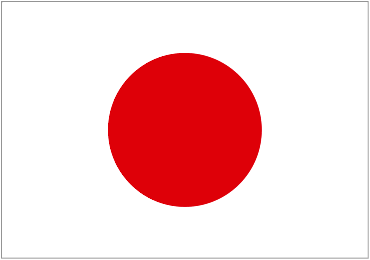Japanese Language Pup Commands
Away - the pup responds to this command by moving back from whatever he was investigating or paying attention to. (difficult to translate)
近づく(Chikadzuku) Be Close - given when out walking; the pup that has been lagging too far back will move up to a position closer to master.
こちに来て(Kochi ni kite) or (oide) By Me - used in every activity; the pup responds by stopping his free ranging about and instead comes to a position/posture by masters side.
コラを抜けて(kora nukete) Collar Off - pup responds by lowering his head to allow his collar to be slipped off easily.
コラ着て(kora kite) Collar On - pup responds by lifting his head, pointing his muzzle up, to allow his collar to be placed on.
It’s interesting to note in terms of discussing collar there are a number of different terms that may be used. The above terms would be most appropriate for a display of command in a setting where not all spectators are known or familiar. Alternately, in a situation in which only friends were present less assertive forms may be more appropriate such as kora o tsukemasho – let’s attach your collar or kora o nukimashou – let’s take off your collar. Those terms are still used by the person in command but suggest a more collaborative approach to the instruction, as in let’s do this together. In a very intimate context where only the pack or just owner and pup are present the phrases immediately preceding may be followed up with the word “kudasai” this would suggest that while it is a command it is also a request and that there is a great deal of respect and care that the owner has for the particular pup.
たえて(Yokotaete) Down - the pup responds by laying down where he is.
~を見つけて(~mitsukete) Find (it) - the pup responds by searching for the item master has designated. Pup locates the item even if it is amongst other similar ones, by searching for his masters scent, which the designated item will have.
前に来て(Mae ni kite)Front - pup responds by coming to a Present posture directly in front of master and remains until he is instructed otherwise.
犬舎 (inu-sya) Kennel - pup responds by going to his cage, his kennel, or his play mat - in that order of availability.
マウント(maunto) Mount - pup responds by climbing onto back of other pup carefully, and fucking him in the arse.
遊ぶとき(asobu toki) Playtime - a release term; this command lets you know pup that whatever command you were given is now over and the time for commands is over. You are free to relax and do your own thing as a pup.
おちつけ(ochitsuke) Settle - usually accompanied with a hand gesture indicating a place; pup responds by going to that place and settling down there, remaining quiet and in that area.
Snuggle - pup responds by cuddling into master and resting his head on Sir. (translation not provided)
立って(tatte) Stand - pup responds by standing up from his All Fours position, or whatever other posture he was in.
待って(matte) Stay - pup responds by remaining in his current place and location, taking a comfortable position, until released by master issuing another command.
Steady - given when pup is nervous or flustered; pup responds by locking into his position and holding himself steady in it, despite any momentary discomfort. (difficult to translate)
ジャンプ(jyumpu) Up - accompanied by a hand signal (a pat on, or point to a place); pup responds by jumping up or climbing onto the location master has indicated.
(jyumpu) is essentially literally translated as “jump” however when accompanied by appropriate body language of patting a surface it effectively communicates “jump here/up”
私を見て(watashi o mitte) Watch Me - an attention getting command, often used before other commands; pup responds by looking at master and keeping his eyes on Sir, giving his master pups full attention.
In a very intimate context where only the pack or just owner and pup are present any of the above phrases ending in “...te” may be followed up with the word “kudasai” which means “please”. In a Japanese cultural context this would suggest that while it is a command it is also a request and that there is a great deal of respect and care that the owner has for the particular pup – indeed it is a loving and respectful relationship.

